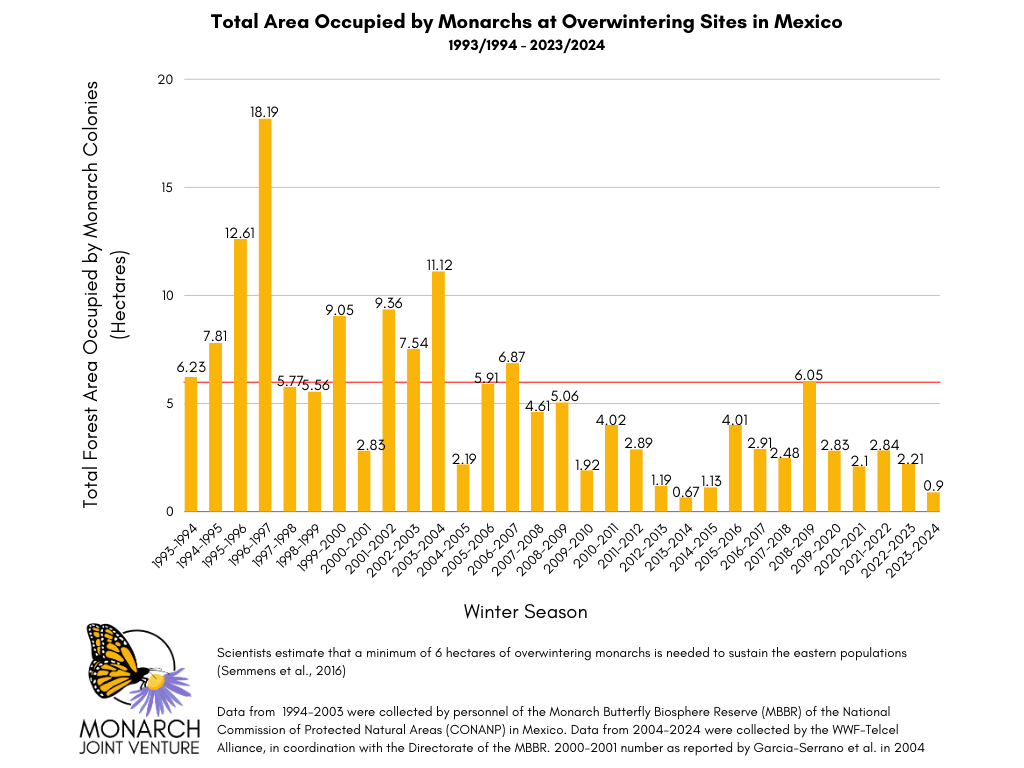The migratory monarch butterfly population trends reveal crucial insights into the health of their migrations and the effectiveness of conservation efforts. Both the eastern and western populations of monarchs face significant challenges, and ongoing monitoring helps inform strategies to support their survival.
Eastern Population

The eastern monarch population is surveyed each winter starting in December when monarchs are clustered together. Counting individual monarchs in these sites is too challenging, so researchers estimate the population by measuring the area they occupy in hectares. Each hectare is approximately 2.47 acres, with the number of monarchs varying per hectare, but likely between 20-30 million monarchs per hectare (median 21.1, according to Thogmartin et al., 2017). Semmens et al., 2016 recommended a threshold of at least six hectares of overwintering monarchs to sustain a resilient eastern population and migration. The current population size remains lower than the target of 6 hectares, driving continued concern for the migration and necessitating increased conservation action.
Western Population

For over two and a half decades, the Xerces Society has led the Western Monarch Count, cataloging the decline of the western monarch population. The Western Monarch Count is an annual effort of volunteer community scientists and conservation organizations to collect data on the migratory western monarch population along the Pacific coast from Mendocino County, California, to Northern Baja, Mexico, during the monarch overwintering season, which occurs from approximately October through February/March each year. In recent years, the count has expanded to include annual surveys at inland overwintering sites in the Saline Valley of Inyo County, California, and in Arizona. The height of this survey effort occurs during the mid-season count (formerly called the Thanksgiving count), which runs for three weeks starting mid-November. The early-season count was added in 2024 to capture the arrival of monarchs at their overwintering sites and occurs for two weeks starting in October. The late-season count was added in 2017 and runs for two weeks starting in late December.





